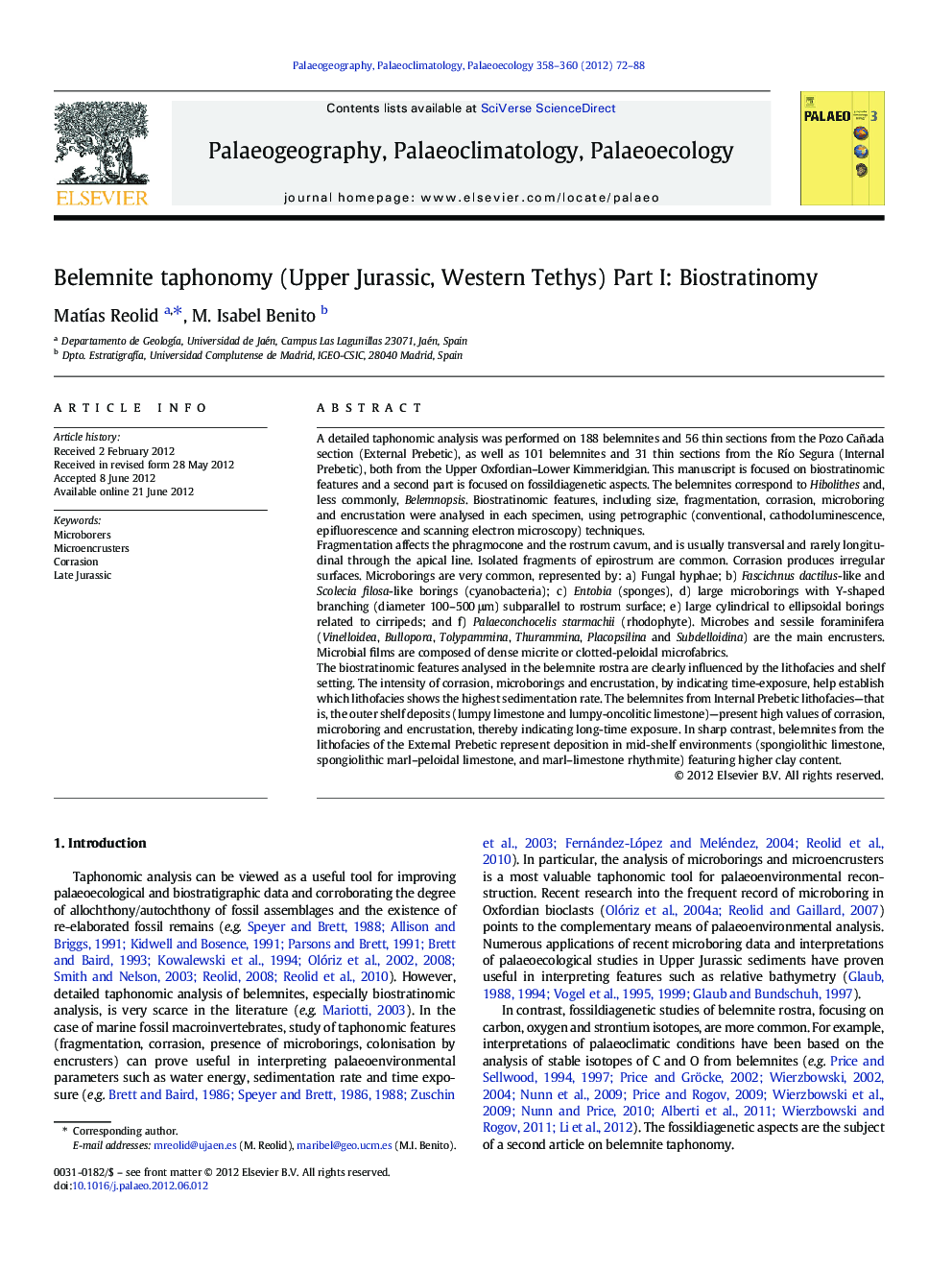| کد مقاله | کد نشریه | سال انتشار | مقاله انگلیسی | نسخه تمام متن |
|---|---|---|---|---|
| 4466671 | 1622222 | 2012 | 17 صفحه PDF | دانلود رایگان |

A detailed taphonomic analysis was performed on 188 belemnites and 56 thin sections from the Pozo Cañada section (External Prebetic), as well as 101 belemnites and 31 thin sections from the Río Segura (Internal Prebetic), both from the Upper Oxfordian–Lower Kimmeridgian. This manuscript is focused on biostratinomic features and a second part is focused on fossildiagenetic aspects. The belemnites correspond to Hibolithes and, less commonly, Belemnopsis. Biostratinomic features, including size, fragmentation, corrasion, microboring and encrustation were analysed in each specimen, using petrographic (conventional, cathodoluminescence, epifluorescence and scanning electron microscopy) techniques.Fragmentation affects the phragmocone and the rostrum cavum, and is usually transversal and rarely longitudinal through the apical line. Isolated fragments of epirostrum are common. Corrasion produces irregular surfaces. Microborings are very common, represented by: a) Fungal hyphae; b) Fascichnus dactilus-like and Scolecia filosa-like borings (cyanobacteria); c) Entobia (sponges), d) large microborings with Y-shaped branching (diameter 100–500 μm) subparallel to rostrum surface; e) large cylindrical to ellipsoidal borings related to cirripeds; and f) Palaeconchocelis starmachii (rhodophyte). Microbes and sessile foraminifera (Vinelloidea, Bullopora, Tolypammina, Thurammina, Placopsilina and Subdelloidina) are the main encrusters. Microbial films are composed of dense micrite or clotted-peloidal microfabrics.The biostratinomic features analysed in the belemnite rostra are clearly influenced by the lithofacies and shelf setting. The intensity of corrasion, microborings and encrustation, by indicating time-exposure, help establish which lithofacies shows the highest sedimentation rate. The belemnites from Internal Prebetic lithofacies—that is, the outer shelf deposits (lumpy limestone and lumpy-oncolitic limestone)—present high values of corrasion, microboring and encrustation, thereby indicating long-time exposure. In sharp contrast, belemnites from the lithofacies of the External Prebetic represent deposition in mid-shelf environments (spongiolithic limestone, spongiolithic marl–peloidal limestone, and marl–limestone rhythmite) featuring higher clay content.
► Biostratinomic features in belemnite are influenced by sedimentary conditions.
► Intensity of corrasion, microborings and encrustation indicates time exposure.
► Fungi, cyanobacteria, sponges, cirripeds and rhodophytes were the main microborers.
► Microbes and foraminifera were the main encrusters on belemnite rostra.
► Intensity of biostratinomic features changes with the lithofacies.
Journal: Palaeogeography, Palaeoclimatology, Palaeoecology - Volumes 358–360, 1 November 2012, Pages 72–88